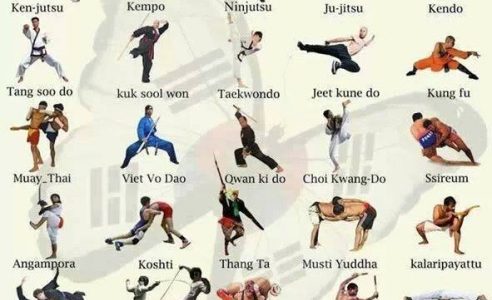Demystifying The Different Fighting Style Styles: From Karate To Taekwondo
Demystifying The Different Fighting Style Styles: From Karate To Taekwondo
Blog Article
Content By-Childers Francis
Are you tired of sensation overwhelmed by the huge world of fighting styles? With numerous designs to choose from, it can be simple to obtain shed in a sea of punches, kicks, and mysterious names. But concern not!
This discussion will debunk the different martial arts styles, taking you on a journey from the effective strikes of Karate to the vibrant kicks of Taekwondo. Get ready to discover the origins, methods, and approaches behind these old art forms.
So, tighten your belt and prepare to start an enlightening exploration into the exciting world of martial arts.
Beginnings of Martial Arts Styles
The origins of martial arts styles can be traced back to old civilizations and their requirement for self-defense and battle techniques. Throughout history, various cultures established their own one-of-a-kind approaches of battling, each with its own collection of strategies and approaches.
In China, as an example, fighting styles designs such as Kung Fu and Tai Chi were developed as a way of protection and improving physical and psychological well-being.
In Japan, the samurai warriors developed designs like Martial arts and Judo, focusing on discipline, accuracy, and mastery of the body.
Similarly, in Korea, Taekwondo emerged as a fighting style highlighting high kicks, rapid movements, and mental stamina.
These early civilizations laid the foundation for the varied array of martial arts designs that exist today, each with its own rich history and social importance.
Techniques and Educating Approaches
To grasp martial arts styles, practitioners have to find out different strategies and training methods.
Strategies are the particular motions and activities utilized in fight, such as strikes, kicks, tosses, and blocks. Different martial arts designs have their own one-of-a-kind collection of techniques that professionals have to grasp through extensive training.
Educating techniques differ depending upon the style, however they generally involve a combination of physical conditioning, drills, sparring, and types.
Physical conditioning is crucial to develop toughness, flexibility, and endurance. Drills help experts refine their techniques and enhance their speed and accuracy.
Sparring enables experts to exercise their strategies in a managed, realistic setting. Kinds, also known as kata, are cut-and-dried sequences of motions that help experts develop muscular tissue memory and focus.
Viewpoints and Principles
Exploring the philosophies and concepts of martial arts styles can provide you with a deeper understanding of your selected discipline. Each martial art has its very own one-of-a-kind viewpoint and collection of directing concepts that form the method it's exercised.
For https://www.kgun9.com/news/local-news/free-self-defense-classes-offered-at-tucson-martial-arts-school , Karate emphasizes discipline, respect, and self-constraint. It instructs specialists to focus their minds and bodies, enabling them to defend themselves while keeping a feeling of internal tranquility.
On the other hand, Taekwondo positions a solid emphasis on rate, dexterity, and flexibility. martial arts with weapons are rooted in the tenets of courtesy, integrity, perseverance, self-discipline, and resolute spirit.
Verdict
Now that you've checked out the origins, strategies, and viewpoints of different martial arts designs, you have a deeper understanding of these old techniques.
Envision a young karate student, practicing with undeviating resolution and emphasis, breaking through boards with a powerful strike.
Their journey showcases the devotion and stamina needed to understand a fighting style, reminding us that with technique and perseverance, anything is possible.
